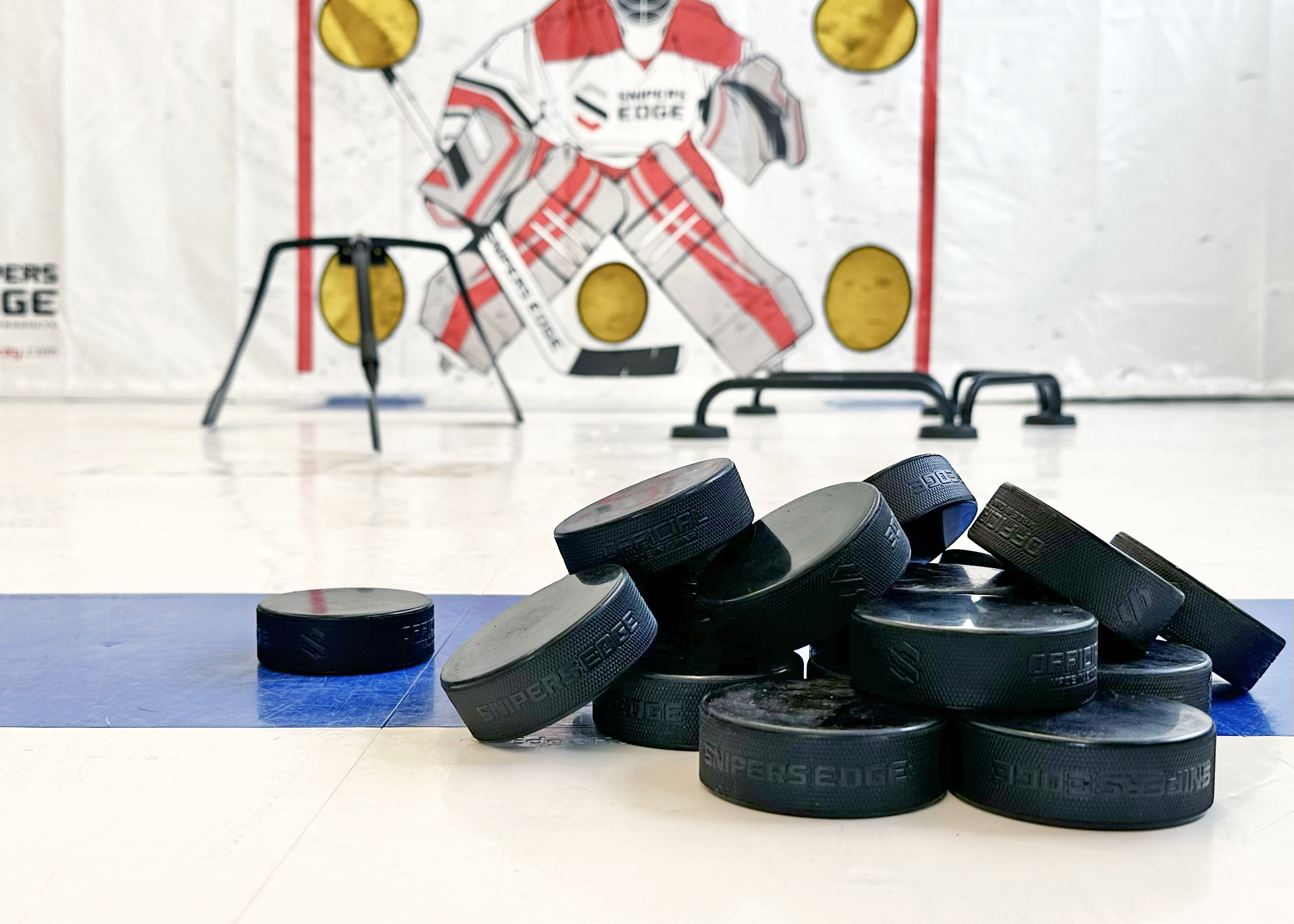In our time as players, coaches, and training professionals, we have observed that most hockey players who shoot at home do the same thing every time: they get a bag of pucks, line up about 15-20 feet from their shooting tarp or net, and start ripping wrist shots.
Now, we are a big proponent of repetitions to be sure, and believe that you get stronger and better with each shot.
That said, shooting pucks from the low slot, on your forehand, while your feet are stationary, only represents a fraction of the shot opportunities you have throughout a game.
Therefore, in order to become an elite goal-scorer, add some circuits to your at-home shooting routine to simulate game-like situations and develop competency in a variety of shots.
In part one of our three-part series, we cover five simple progressions that players of all levels can practice at home to become a goal-scoring machine:
- Moving forward: walk with the puck 2-3 steps forward while stickhandling, then plant your foot and shoot. Pretty simple.
- Why do it? Gain repetitions with moving the puck from stickhandling position into your shooting zone, restore balance while moving prior to shooting, and skip the wind up to focus on quick shots.
- Training tip: alternate which foot is being planted while you shoot! Players will naturally have a favorite, but you will certainly have to do both in game situations.
- Moving laterally: Turn 90 degrees so you face the side wall. Walk backwards 2-3 steps while stickhandling and pulling the puck back, then release on your forehand.
- Why do it? Often times we’re skating laterally to create space, shooting off a faceoff play, or lined up to receive a pass and one-timer from teammate. And often times our time is limited to rip the shot. So here we train our vision and body to the new angle, and focus on rotating our hips to face the goal and observe what new scoring angles this might require.
- Training tip: alternate which side you’re facing. Visualize whether you’d be able to catch and turn your body to shoot, or practice catching and shooting on your backhand when on opposite side.
- Toe drag into a shot: start with pucks in front of you, pull the puck towards you in a toe drag, set it, then a quick release shot in one continuous motion. If your player is younger and not ready for toe drags, encourage them to pull pucks back with their backhand to their shooting zone.
- Why do it? Helps to incorporate some more hand-eye stickhandling work into the circuit, practice securing the puck away from a poke-checking defenseman or away from a scrum prior to shooting, and emphasize quick release.
- Shoot around a defender: set up an obstacle in front of your pucks that you need to stickhandle around and/or move your feet around.
- Why do it? Helps introduce a little chaos into your shooting just like you’ll see in a game, helps you recognize where space is available to get off a shot, practice stickhandling into a shooting zone.
- Training tip: Practice going forehand to backhand to forehand and shooting, then backhand to forward to backhand, so you can also practice some dekes and fakes while you shoot.
- Off-balance: With a folding chair, practice stickhandling and shooting with one knee on the chair.
- Why do it? Teach your body to shoot in less than perfect situations, focus on knee bend with the leg on the ground to create enough stability to get off a shot, work on core and ankle strength.
- Training tip: alternate which knee is on the chair.
Encourage your player to try these 5 progressions, with 10 shots each, then repeat each 3 times. That’s 100-150 shots in total, but can be done in 15-20 minutes. If your player can do this 4 days / week, then by the end of the summer he/she will have banked 10,000 shots!
Add modifications to the progressions as well to make the drills more fun and easier to execute. The key is creating game-like scenarios at home
These simple yet effective progressions will help add a little variety to your at-home training, and get you to your goal of nailing those big shots with the game on the line.
Join us next week for part 2 of the series.


